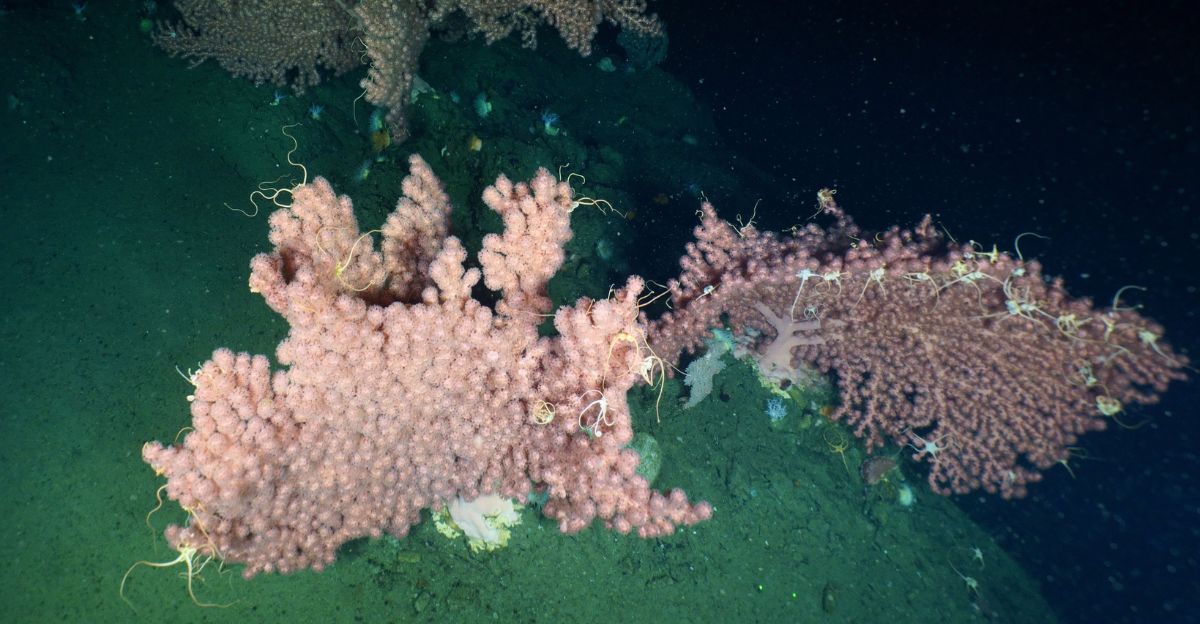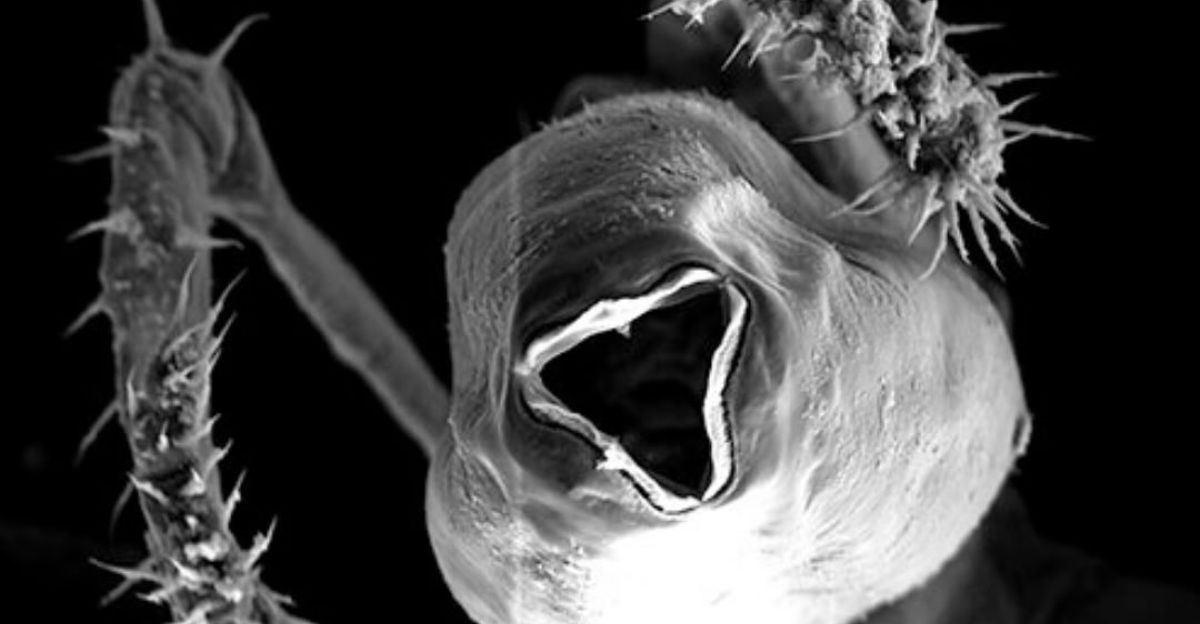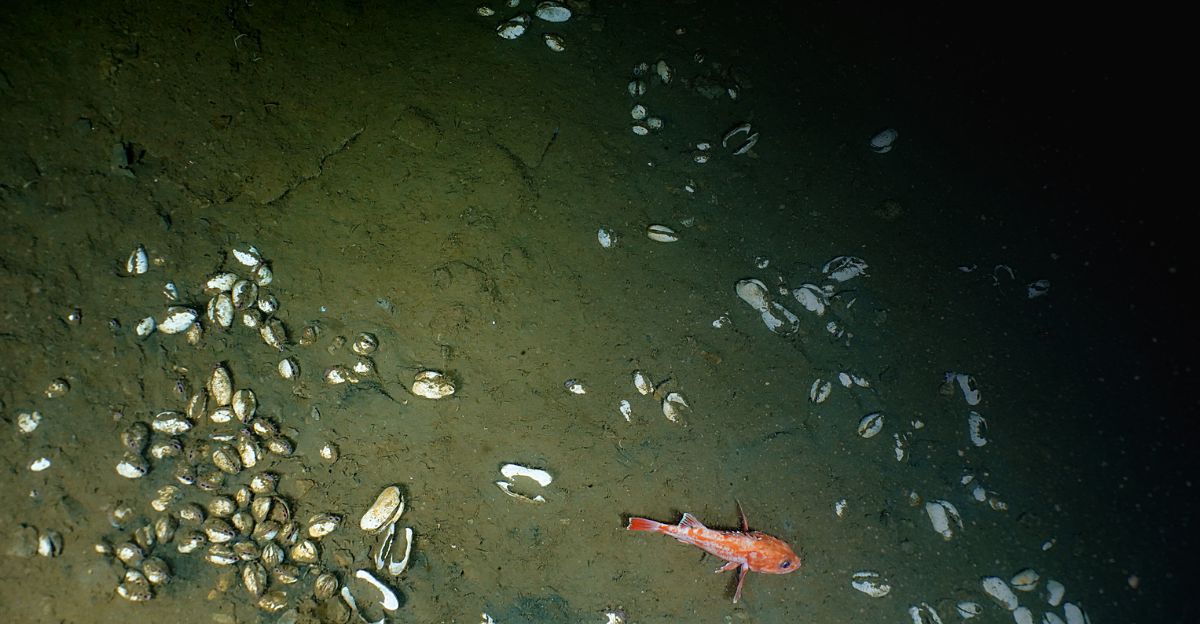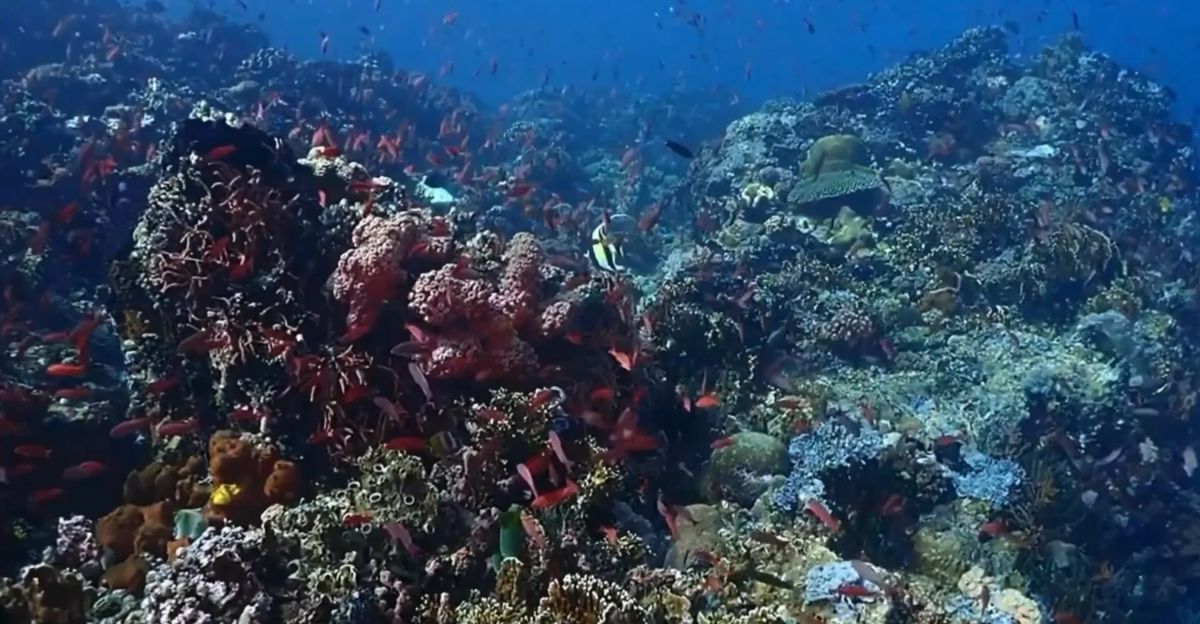
Researchers have discovered three new species of sea spiders (genus Sericosura) off the coast of California. These spiders have a unique symbiotic relationship with methane-eating bacteria that live on their exoskeletons, allowing them to obtain their energy from methane, a potent greenhouse gas. These deep-sea organisms live in methane seeps 600–1,200 meters below sea level, which are dark places where traditional photosynthesis cannot occur.
The finding contradicts conventional wisdom regarding marine trophic systems, which have traditionally placed a strong emphasis on photosynthesis as the primary energy source. It also emphasizes how adaptable life is in harsh settings, where organisms use chemical energy sources to survive. Given the strength of methane as a greenhouse gas, this methane-based nutrition pathway may have significant ramifications for global methane cycling.
Historical Background and Findings

A recent turning point in marine biology, the discovery of these methane-powered sea spiders represents a substantial shift from earlier theories of sea spider ecology. The other two species were discovered along the California and Alaskan coasts after the first species was found in July 2023, close to Del Mar, California. In the past, sea spiders mainly were thought of as scavengers or predators that preyed on soft-bodied invertebrates like sponges and anemones.
Our knowledge of biodiversity and ocean energy flow has been altered by the discovery, which also reflects a larger trend in marine science toward the discovery of chemosynthetic ecosystems that flourish without the need for sunlight. Methane seeps were once thought of as geochemical oddities, but they are now understood to be centers of biological adaptation and innovation.
Explanation of the Symbiotic Relationship

Sea spiders and methane-oxidizing bacteria have a complex mutualism that is essential to their survival and is a prime example of evolutionary ingenuity. By colonizing the spiders’ exoskeletons, these microorganisms create thick biofilms that resemble a “microbial lawn.” The primary source of food for the spiders is the organic compounds like sugars and fats that are produced when the bacteria break down the methane and methanol released from seeps.
Marine animals rarely exhibit this symbiosis, which highlights a novel way to harness chemical energy in a setting where conventional food sources are limited. These bacteria’s metabolic processes also provide intriguing biochemical insights that could guide biotechnological uses like the production of bioenergy or methane bioconversion.
Evolutionary and Ecological Consequences

Evolutionary biology and deep-sea trophic dynamics must be reexamined in light of this discovery. Sea spiders are now important consumers in this chemosynthesis-based ecosystem, which was previously known to sustain communities of mussels, tube worms, and sponges dependent on chemosynthetic bacteria through methane seeps. The development of this distinct feeding technique might be an adaptive reaction to the lack of prey in these harsh settings, where competition is fierce, and energy sources are scarce.
Furthermore, it shows how life can use greenhouse gases as a resource as well as a threat, possibly affecting carbon flow and methane cycling in oceanic carbon sinks. This finding also calls into question how long these symbioses have existed and whether they are a recent adaptation to shifting ocean chemistry or an ancient relationship.
Methane Seeps as Special Environments

Geological features known as methane seeps occur when methane seeps into the ocean from the Earth’s crust, forming tiny pockets of life in the shadowy depths. The base of a food web that is not dependent on sunlight is formed by the diverse microbial communities that live in these seeps and transform methane into biomass.
By serving as natural methane sinks and keeping large amounts of methane from entering the atmosphere, methane seeps also contribute significantly to the global carbon cycle and climate regulation. Seeps are frequently surrounded by highly specialized biological communities that have evolved special adaptations to withstand low oxygen levels and high methane concentrations.
Studying Deep-Sea Methane-Eating Spiders Presents Difficulties

There are many logistical and scientific difficulties in studying these tiny sea spiders, some of which are as small as a grain of rice. Accessing their deep-sea habitats is challenging and necessitates costly, specialized equipment such as manned submersibles that can withstand extremely high pressure and low temperatures and remotely operated vehicles (ROVs).
These technical challenges underscore the intricacy of studying deep-sea symbioses and the necessity of interdisciplinary cooperation between engineers, chemists, and marine biologists. Additionally, because these organisms are delicate, great care must be taken when preserving and analyzing samples to prevent contamination or deterioration. To improve our knowledge of deep-sea ecosystems and their function in global biogeochemical cycles, these obstacles must be overcome.
Greater Environmental Importance

The paradoxical function of methane in marine ecosystems is highlighted by the sea spiders that consume it. In the deep ocean, methane supports distinct biological communities that serve as the basis for intricate food webs despite being a potent greenhouse gas that contributes to climate change. Gaining knowledge about these organisms could help develop strategies to mitigate climate change by providing insights into carbon sequestration and natural methane mitigation processes.
This finding also highlights how animal and microbial life are interdependent in controlling greenhouse gas fluxes, indicating that preserving deep-sea habitats may have wider climate benefits. Understanding these natural methane sinks and their biological components is becoming more and more important as methane emissions from both natural and man-made sources continue to rise.
Alternative Views and Conjectural Theories

These findings imply that methane can be a fundamental energy source in some ecosystems, transforming a climate threat into a biological resource, in contrast to the traditional perception of methane as only an environmental hazard. Presenting methane seeps as essential ecological niches with intricate food webs refutes the myth that they are only geochemical oddities or sources of pollution.
These interdisciplinary extrapolations suggest that methane-based life may not be an Earth-centric anomaly but rather a universal possibility, opening up new fields in evolutionary biology and astrobiology. This viewpoint encourages investigation beyond conventional biological paradigms and challenges us to reevaluate how adaptive and resilient life is.
A Special Framework for Interpreting Symbiosis in the Deep Sea

A novel idea of “animal-microbe farming” in harsh settings, where animals grow microbial biofilms as their primary food source instead of hunting or scavenging, is suggested by this discovery. This framework emphasizes the significance of microbial symbionts in animal nutrition and contrasts with conventional predator-prey or filter-feeding paradigms.
The idea highlights cooperation and mutualism as catalysts for biological innovation, which has implications for evolutionary theory as well. We can better understand ecological interactions and energy flow in extreme habitats by presenting these sea spiders as “farmers” as opposed to merely consumers. This knowledge could help guide conservation efforts and ecosystem management.
Prospects for the Future

By identifying a new methane-based trophic link and deepening our knowledge of deep-sea biodiversity and biogeochemistry, the discovery of methane-eating sea spiders off the coast of California marks a paradigm shift in marine biology. This finding highlights the intricacy of methane cycling in the ocean and adds to the story of life’s adaptability.
It will also be crucial to comprehend how environmental changes like ocean warming and acidification impact these fragile relationships. In the end, this discovery serves as an example of how curiosity-driven research in harsh settings can produce ground-breaking discoveries with significant ramifications for biotechnology, ecology, and climate science. To maintain these ecosystems’ distinctive biodiversity and their function in regulating methane levels globally, it will be crucial to shield them from human influences.
Explore more of our trending stories and hit Follow to keep them coming to your feed!

Don’t miss out on more stories like this! Hit the Follow button at the top of this article to stay updated with the latest news. Share your thoughts in the comments—we’d love to hear from you!







